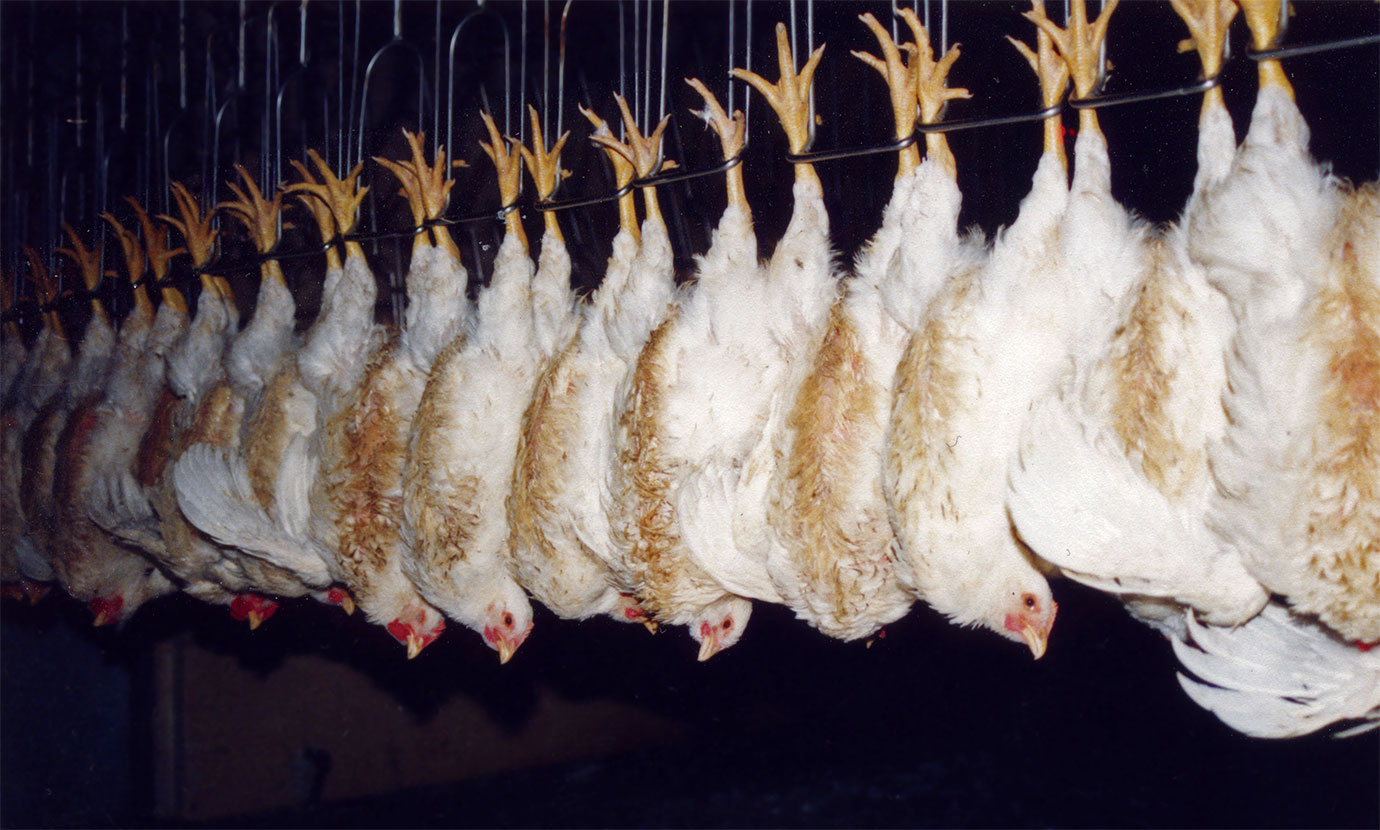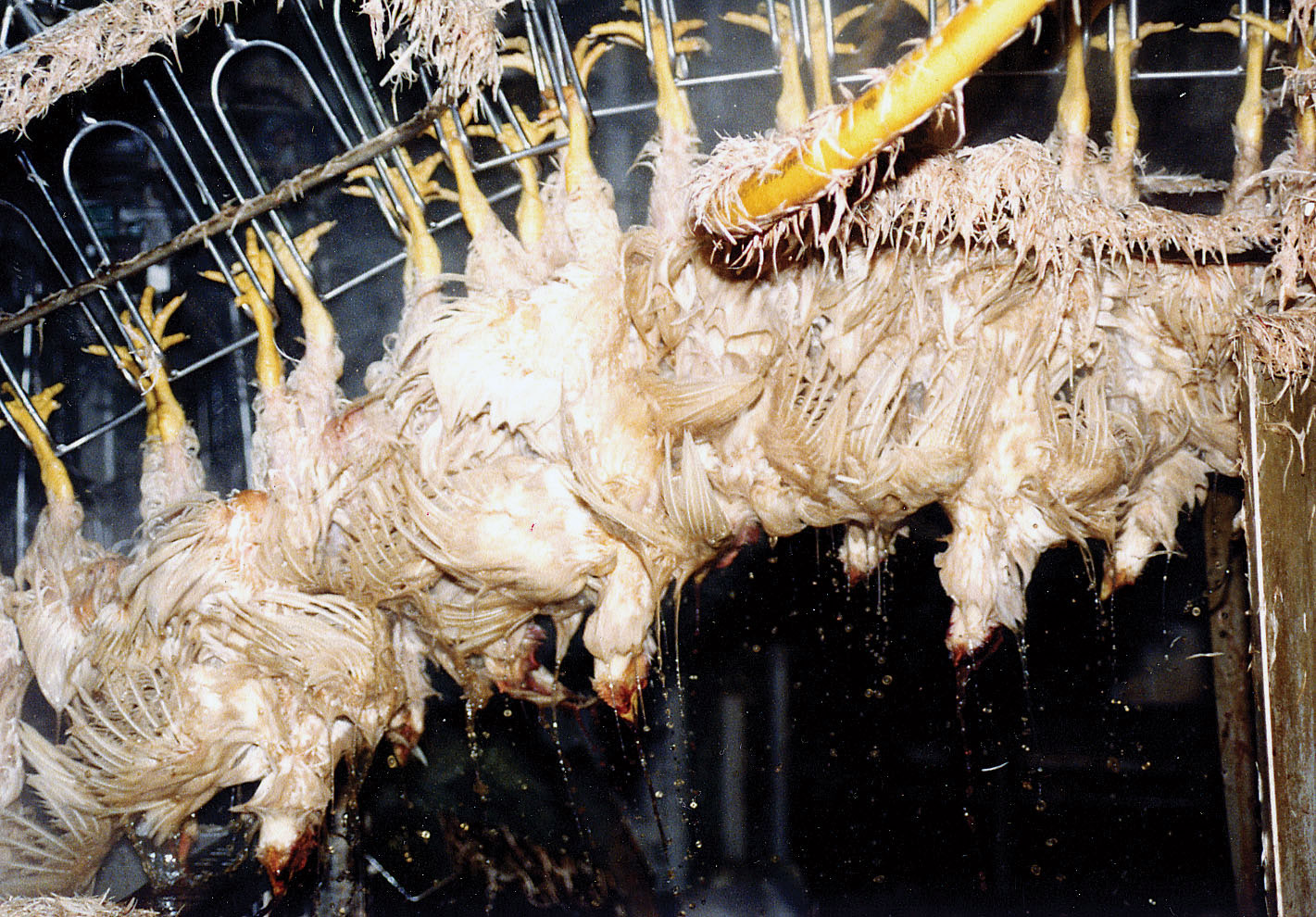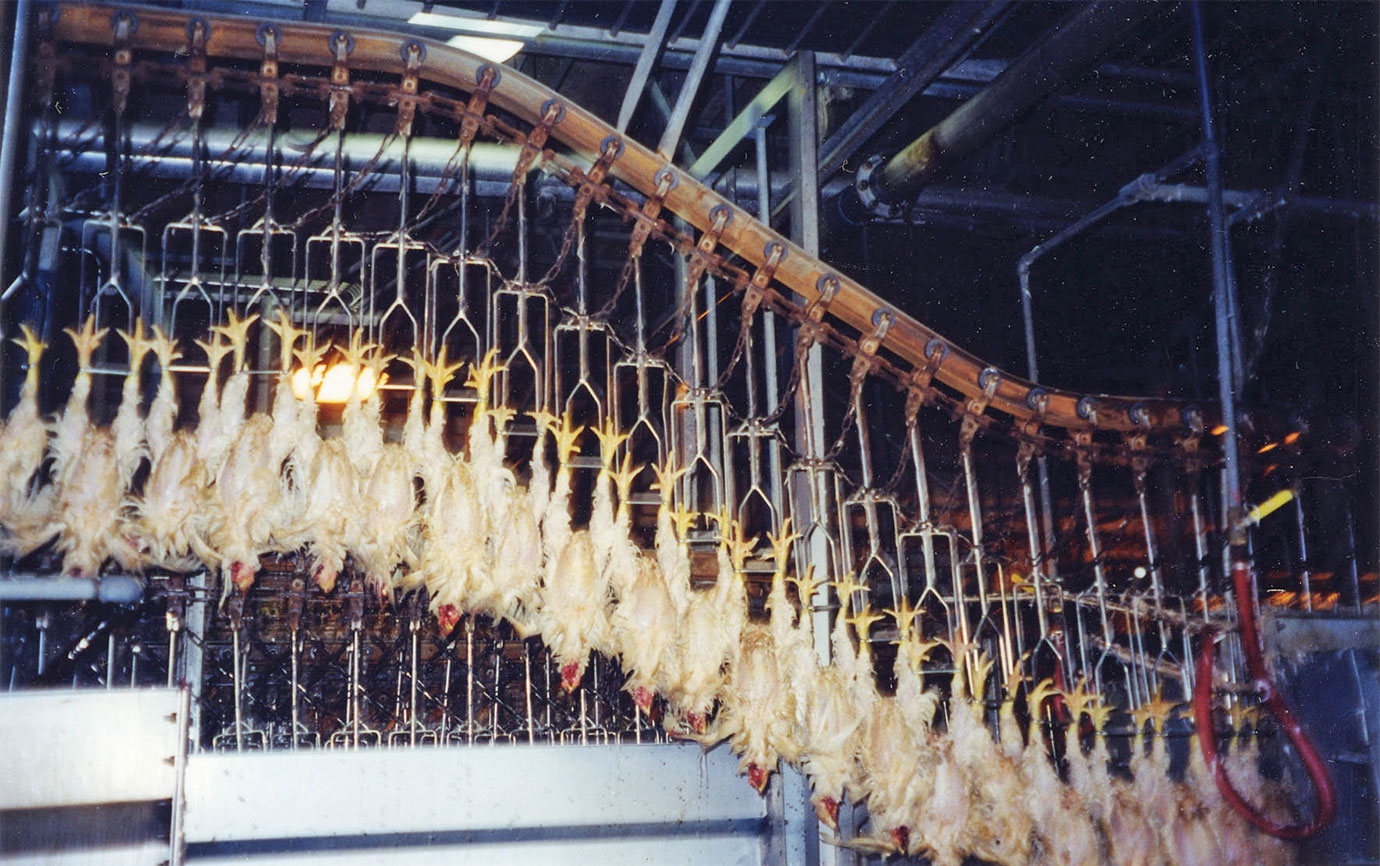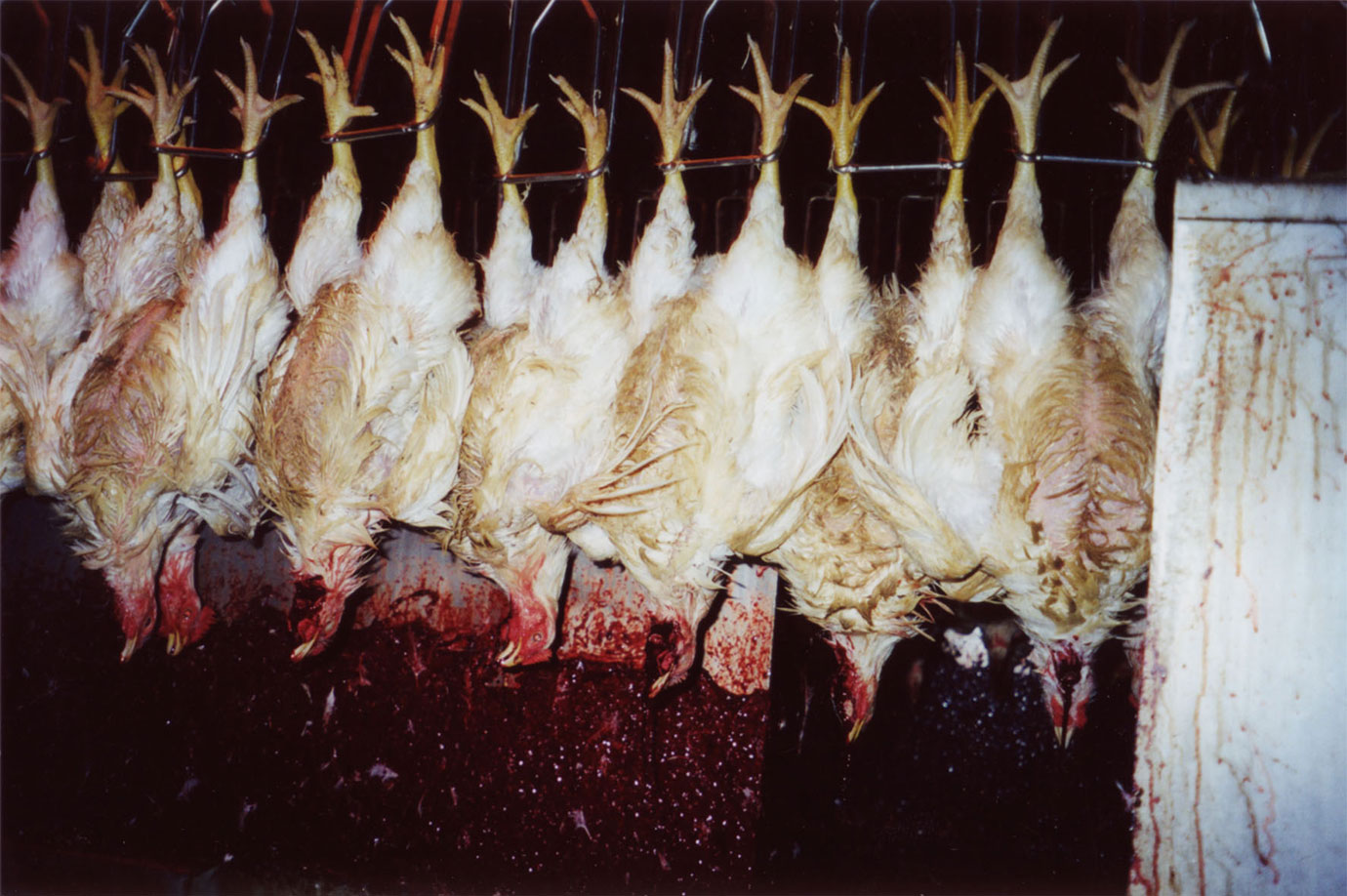
Photo by L. Parascandola, Tyson Chicken Slaughter Plant in Richmond, Virginia
PRE-SLAUGHTER ELECTRICAL SHOCK IS NOT “STUNNING”
Benjamin Franklin described his own experience while trying to electrocute a turkey in 1750.
By Karen Davis, PhD, President, United Poultry Concerns
It is distressing how animal advocates and others reflexively recycle the falsehood that birds are meant to be “stunned” by the pre-slaughter electrified trough water through which they are dragged, face down, hanging by their heels on the disassembly line in the slaughter plants. Never was a term more misused and unjust, along with “euthanasia” (a merciful death) to characterize mass-murdering animals by torturous means.

Photo by L. Parascandola, Tyson Chicken Slaughter Plant in Richmond, Virginia
It is not possible to "properly stun" a chicken, a turkey or other birds in the slaughterhouses. The electrified water is not intended to stun them in the first place, meaning it is not designed to render them unconscious or pain-free. Nor is it meant to kill them. The purpose of their being dragged face down through cold, salted, splashing electrified water, prior to partial throat-cutting, is mainly twofold: To fit them to the slaughter machinery and to loosen their feathers after they are dead.
High levels of electrical current that could induce outright death are avoided because they would interfere with “plant efficiency” and cause hemorrhage – a “bloody bird,” in the words of a researcher.
Let us please not misrepresent the agony endured by the electrically paralyzed conscious birds or mistakenly urge that they be "stunned" by a process that tortures them. We have a responsibility to render their experience as accurately as possible, whereas the language of “proper electrical stun,” referring to strictly commercial goals, totally disguises their suffering, as documented here: Poultry Slaughter.

Photo by Carol McCormick, Townsend's Chicken Slaughter Plant in Millsboro, Delaware
When Benjamin Franklin Shocked Himself While Attempting to Electrocute a Turkey
The writer of this November 25, 2021 Smithsonian Magazine article, excerpted below, might have noted that, starting in the 1930s, the use of paralytic electricity was being experimentally researched for mass-production of birds to replace the traditional farm’s use of scrambling their brains with knives to paralyze their muscles to keep them still during slaughter and to facilitate removal of their feathers after scalding them in hot-water tanks. Maybe Franklin’s account “inspired” the burgeoning industry of the 1930s to institutionalize this torturous procedure, which is how the majority of chickens, turkeys, ducks and other birds, including ostriches and emus, are immobilized to this day in the slaughter plants prior to their necks being partially cut by rotating mechanical blades:
“The Intense Pain” Franklin experienced
“The statesman set out to develop a standard procedure for preparing turkeys with static electricity collected in Leyden jars. One day, while performing a demonstration of the proper way to electrocute a turkey, he mistakenly touched the electrified wire intended for the turkey while his other hand was grounded, thereby diverting the full brunt of the turkey-killing charge into his own body. Writing to his brother John two days later, on Christmas Day in 1750, Franklin detailed what happened next:
‘The company present … say that the flash was very great and the crack as loud as a pistol; yet my senses being instantly gone, I neither saw the one nor heard the other; nor did I feel the stroke on my hand, though I afterward found [that] it raised a round swelling where the fire entered as big as half a pistol bullet, by which you may judge of the quickness of the electrical fire, which by this instance seems to be greater than the sound, light or animal sensation.’
“Acknowledging the oversight that led to this shock (‘I might safely enough have done if I had not held the chain in the other hand,’ he wrote), Franklin attempted to describe the intense pain he’d experienced:
‘I then felt what I know not how well to describe—a universal blow through my whole body from head to foot, which seemed within as well as without; after which the first thing I took notice of was a violent, quick shaking of my body, which, gradually remitting, my sense as gradually returned, and I then thought the bottles must be discharged, but could not conceive how, till at last I perceived the chain in my hand, and recollected what I had been about to do. That part of my hand and fingers which held the chain was left white, as though the blood had been driven out, and remained so eight or ten minutes after, feeling like dead flesh; and I had a numbness in my arms and the back of my neck, which continued till the next morning, but wore off. Nothing remains now of this shock but a soreness in my breast bone, which feels as if I had been bruised. I did not fall but suppose I should have been knocked down if I had received the stroke in my head. The whole was over in less than a minute.’”
To conclude:
Well, “the whole” of Franklin’s ordeal was not over in less than a minute according to his own account of his lingering aftereffects. In any event, the paralyzed birds, following their slaughterhouse immersion in the electrified salt water, are intentionally kept alive for several more minutes, so that their still-beating hearts will continue to pump blood out of their bodies before they are thrown both dead and alive into the splashing scald-water tanks. This is how we treat our fellow creatures.
– Karen Davis, United Poultry Concerns

Photo by Carol McCormick, Townsend's Chicken Slaughter Plant in Millsboro, Delaware